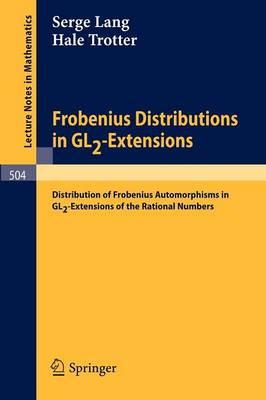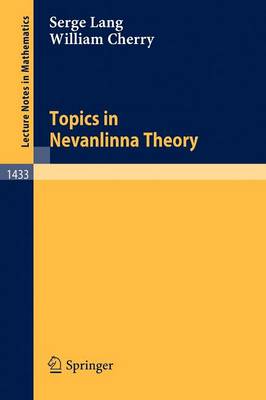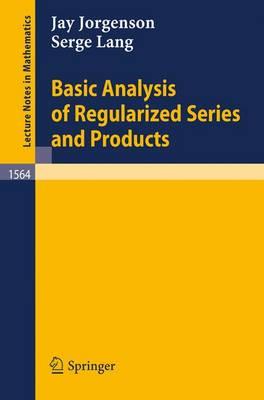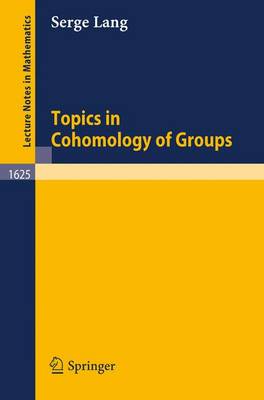Lecture Notes in Mathematics
5 primary works
Book 504
Frobenius Distributions in GL2-Extensions
by Serge Lang and Hale F. Trotter
Book 1433
Book 1564
Basic Analysis of Regularized Series and Products
by Jay Jorgenson and Serge Lang
operators (differential, pseudo-differential, elliptic,
etc.) are being merged under amore general analytic theory
of regularized products of certain sequences satisfying a
few basic axioms. The most basic examples consist of the
sequence of natural numbers, the sequence of zeros with
positive imaginary part of the Riemann zeta function, and
the sequence of eigenvalues, say of a positive Laplacian on
a compact or certain cases of non-compact manifolds. The
resulting theory is applicable to ergodic theory and
dynamical systems; to the zeta and L-functions of number
theory or representation theory and modular forms; to
Selberg-like zeta functions; andto the theory of
regularized determinants familiar in physics and other parts
of mathematics. Aside from presenting a systematic account
of widely scattered results, the theory also provides new
results. One part of the theory deals with complex analytic
properties, and another part deals with Fourier analysis.
Typical examples are given. This LNM provides basic results
which are and will be used in further papers, starting with
a general formulation of Cram r's theorem and explicit
formulas. The exposition is self-contained (except for
far-reaching examples), requiring only standard knowledge of
analysis.
Book 1625
Book 1868
Posn(R) and Eisenstein Series provides an introduction, requiring minimal prerequisites, to the analysis on symmetric spaces of positive definite real matrices as well as quotients of this space by the unimodular group of integral matrices. The approach is presented in very classical terms and includes material on special functions, notably gamma and Bessel functions, and focuses on certain mathematical aspects of Eisenstein series.




